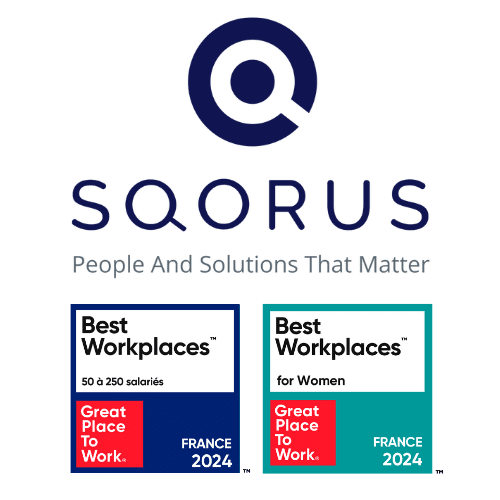Against a backdrop of changing working patterns (telecommuting, search for meaning, increased mobility), HR Departments face a major challenge: modernize their operations to become truly strategic partners.
Faced with outdated tools, dispersed processes and unreliable data, they need a solution to improve efficiency, responsiveness and relevance.
The good news is that this solution does exist: it’s called the Human Resources Information System(HRIS).
In this article, discover how an HRIS can profoundly transform the HR function, improve the employee experience and become a lever for overall corporate performance.
Why is an HRIS essential in today’s HR environment?
Clear definition: what is HRIS ?
A Information system HRIS (Human ResourcesInformation System) is a digital platform for centralizing tools that automate and optimize all functions HR. It facilitates human resources management of the employee life cycle and supports an integrated RH more efficient. To find out more, take a look at our article on complete HRIS definition.
Implementing HRIS means taking a decisive step towards digitization HR and supporting organizational growth.
Digital solutions to HR challenges
Faced with the emergence of teleworking, the fragmentation of teams and the new demands of employees, human resources have to reinvent themselves. Visit digitalization via a HRIS provides the responsiveness needed to meet these challenges, while enhancing the employee experience. For a better understanding of the issues, read our article on HR digitization at the end of the crisis.
Managing the impact of obsolete HR processes
The processes RH manual or spread over several tools slow down the performance. Lack of centralization is detrimental to responsiveness and data quality. With a HRIS, repetitive tasks are automated and access to information is facilitated, which favors their use. optimization.
How does HRIS transform human resources?
Automation of purely administrative tasks
HR professionals spend almost a third of their time on administrative tasks. These may include personnel management, payroll, scheduling, activities or even expense accounts. These tasks, while necessary, do nothing to improve business performance. Compliance with all regulations is essential for the company, but it does not create added value.
HRIS makes it possible to automate many of the administrative tasks involved in human resources management. Managing leave and absences, training and receiving applications for recruitment are all tasks now handled by the HRIS.
The time freed up byautomating these tasks will be allocated to activities that bring significant added value, enabling the implementation of a genuine HR strategy that benefits the company.
Unify data RH for a clear, reliable view
A centralized database guarantees reliability, accessibility and constant updating. This facilitates the creation of dashboards RH and management indicators based on reliable, consolidated data.
Align HR with corporate objectives
With its analytical and planning functions, the HRIS connects actions RH to the organization’s strategic priorities. Management thus becomes results-oriented, and contributes directly to the performance global.
How does HRIS boost employee performance?
Easy, permanent access to HR information
Via a simple, secure portal, each employee has access to his or her documents, objectives, assessments and training. This transparency reinforces their autonomy and motivation.
Improving skills management
The HRIS facilitates skills identification, interview management, skills upgrading and professional development, thanks to tools HR interconnected and all accessible in one place.
Efficiently track careers and objectives
Management of interviews, career plans and follow-up for performance is centralized. Interaction between managers and employees becomes more fluid, collaborative and proactive.
What concrete benefits does an HRIS bring in the long term?
Decide with reliable data RH
Clear dashboards provide a global view of the function RH and reliable projections. Decisions are based on consolidated data, useful for corporate strategy.
Anticipating organizational changes
With its forward planning functions, HRIS enables you to adapt human resources to future needs, and to manage skills with a forward-looking approach.
Creating a culture of collaboration and transparency HR
The HRIS promotes open communication between HR, managers and employees. This transparency consolidates trust and improves the corporate culture. management within the company.
How do you choose your future HRIS?
The importance of ergonomics for adoption
Ergonomic design is essential for rapid adoption of the HRIS. An intuitive interface enhances the user experience and accelerates project acceptance.
Choose HRIS with appropriate functional coverage
It is essential that the HRIS integrates all components RH necessary for the company, and interfaces easily with tools existing. For guidance, see our article on support from a consulting firm in choosing your HRIS.
Opt for a scalable, flexible solution
A HRIS must rapidly adapt to structural changes, business needs and new practices HR. It thus becomes a partner in the company’s ongoing transformation.
Conclusion: HRIS, a tool focused on HR performance
By relieving HR teams of a certain number of tasks, and involving the company’s employees more closely in the various processes, the HRIS willimprove HR performance.
The HRIS integrates multiple tools that are constantly evolving. All the tools facilitating mobility, freely accessible dashboards, cloud computing and chatbots are all solutions enabling employees to take control of their development within the company.
Employees and HR managers alike will be able to access information about themselves and monitor their performance in real time. This information is available throughout the year, and over several years. Employees can track their progress, highlight their successes and learn from their failures, check their skills development and identify any needs they may have.
Information traceability is guaranteed, and employee follow-up is simplified. The use of this data will enable everyone to identify the levers that will enable them to improve their performance.
Don’t let your HR teams waste precious time on administrative tasks. Contact our experts today to unleash the full potential of your human capital and turn your HRIS into a real performance driver for your company.
How can you make the most of your HRIS software?
Find out how to boost your company's productivity with an efficient HRIS. Don't miss out on the benefits of an HRIS: download our Ebook and transform your HR management!
Read more in our feature on "Valuing the use of an HRIS":
- A unique HRIS software to boost the potential of your HR data
- HRIS definition: what is an HR information system?
- Why implement an HRIS in your company?
- The different fields of application of an HR information system
- The HRIS: a tool at the heart of HR performance
- How to enhance your recruitment with an HRIS?
- Integration of new employees: how to optimize onboarding?
- Talent management: what does an HRIS tool actually do for you?
- The contribution of an HRIS in the management of employee training
- Compensation and payroll management: the benefits of HRISsoftware
- Absence management: HRIS software is there for you
- The contribution of an HRIS in the management of employee training
- HRIS advantages: benefits for managers and employees
Contact
A project? A request?A question?
Contact us today and find out how we can work together to make your company’s digital future a reality.













